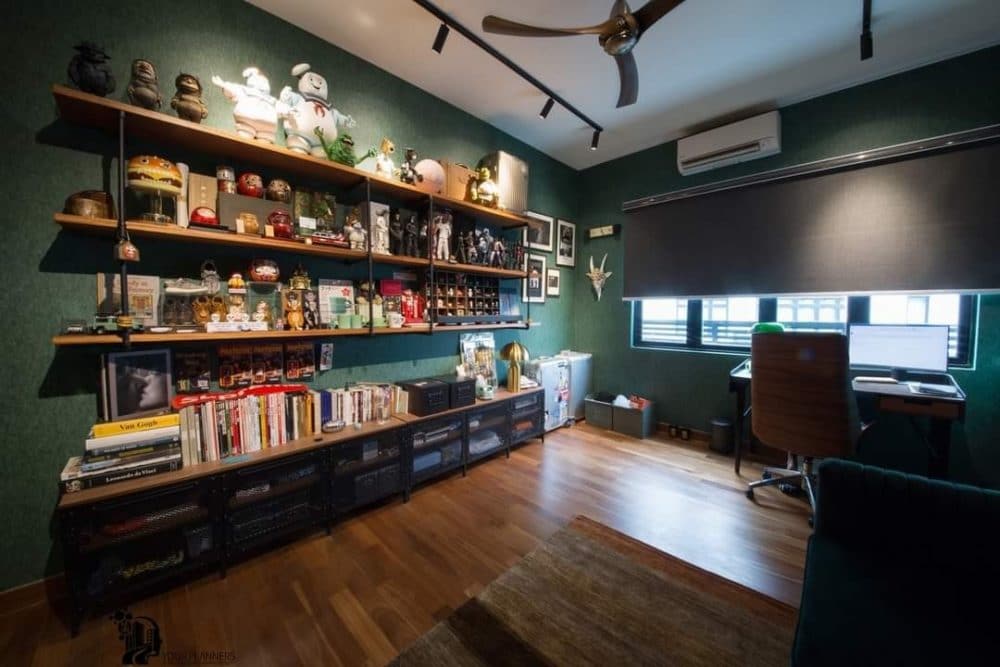Lead has been banned in the US since 1978. That’s nearly 40 years ago.
But in Malaysia, lead is still found in domestic enamel paints. The use of lead paint in developed country has decreased tremendously, but is still found in most Asian countries.
The level of awareness about the dangers of lead is still low and you should get yourself informed on how it can affect the well-being of your family.
Get instant quotes, verified customer reviews, view completed work and be secured.
Why is lead used in paint?
According to the Royal Society of Chemistry, lead was added to paint for several reasons. Firstly, different types of lead compounds could create different colours. For example, lead chromate gives a yellow colour, and lead (II) carbonate was used to coat wooden surfaces.
Lead is also highly opaque, so you don’t need to paint so many coats to cover an area. And since lead is insoluble in water, walls painted with lead-based paints are more durable and washable.

Why is lead paint dangerous?
The problem is, lead is highly toxic. Lead has been recognised as a hazardous substance in paint since the 1960s.
Lead in paint, if ingested, can reduce the ability of cells to carry oxygen, which has serious health implications especially to kids, pregnant ladies, and unborn children.
Inhaling lead-contaminated air, or accidentally consuming lead traces can affect a person’s health, regardless of their age.
For younger children (toddlers), too much exposure and consumption of lead content could cause lead poisoning. Among the identified symptoms of lead poisoning in young children are developmental delays, learning difficulties, irritability, loss of appetite, weight loss, sluggishness and fatigue, abdominal pain, vomiting, constipation, hearing loss and seizures (Mayo Clinic).
Better Health Channel discussed that children of age below than 5 years old are particularly vulnerable to lead exposure because:
- They frequently put their hands and toys into their mouths
- They absorb and retain more lead from the gut and airways than adults do
- Their developing brains are more sensitive to the effects of lead
Although adults are not as vulnerable as the toddlers, exposure to small amount of lead for a long period of time could cause high blood pressure, joint and muscle pain, difficulties with memory or concentration and headaches (Mayo Clinic).
At a more serious level, lead poisoning in adults can cause damage to their internal organs such as the liver, kidneys, and brain. If a pregnant lady is exposed to high lead content, it could be dangerous to the unborn child as well. According to World Health Organization,
Exposure of pregnant women to high levels of lead can cause miscarriage, stillbirth, premature birth and low birth weight, as well as minor malformations.
And this problem is not limited to old buildings. In 2007, the Mattel toy company made two massive product recalls involving more than 1.4 million toys. The toys were manufactured in China, and were found to be covered with lead paint.
Is lead paint available and used in Malaysia?
Unfortunately, the answer is YES.
The acceptable level of lead in paint should not exceed 90 parts per million (ppm).
However, when a research team bought samples of paints from shops in Kedah and Penang, they found that:
- 41% of paint tested had lead concentrations exceeding 600 ppm
- 31% of paint tested had lead contrations exceeding 10,000 ppm
This research was done in 2016 by the International POPs (Persistent Organic Pollutant) Elimination Network (IPEN) and The Consumers’ Association of Penang (CAP).
In their report, it says that:
“Sixteen out of 39 enamel decorative paints (41 percent of paints) contained a total lead concentration above 600 ppm. Moreover, twelve paints (31 percent of paints) contained dangerously high concentrations of lead above 10,000 ppm. The highest lead concentration detected was 150,000 ppm, whilst the lowest was less than 60 ppm.”
This shows that lead paints are still available in the Malaysian market.
Also highlighted in the research,
“…paint can labels did not carry meaningful information about lead content or the hazards of paint with high lead content and some paints with high lead concentrations were falsely advertised as being ‘low lead’.”
It is very important for consumers to read and understand the label before making any purchase.
Why isn’t the government doing anything about it?
According to the IPEN report, there is currently no regulation in place limiting the amount of lead in paint for household and decorative use. There are only regulations for paint in toys.
“Presently we only have mandatory safety standards stipulating maximum acceptable migration of lead in paint of not more than 90 parts per million (ppm) in toys intended for children below 14 years old. This is not adequate because Malaysia’s measure on children’s toys provides only partial protection as it does not address domestic paints, which are the paints most likely to contribute to childhood lead exposure.”
However, according to a representative from Nippon Paint Malaysia, the Malaysia Paint Manufacturers Association (MPMA) is driving an initiative to get all paint manufacturers to remove lead from decorative paint by 2018.
“Nippon Paint is a member of MPMA. All our water based products does not contain lead. For oil based decorative paint products, all the products that are from Colour Creation machines also does not contain any leads. We are in the process of removing added lead from some ready mix colours.”
“Additionally, all products that are under Nippon Paint Green Choice are lead free, low VOC, APEO free which is certified by Singapore Green Label.”
How do I know if my house has lead-paint?
Lead paint is generally not dangerous when it is dry and painted on the walls.
But, it IS dangerous if it starts to peel, since paint flakes can accidentally be eaten, or inhaled as dust.
As such, lead paint is only dangerous if you are planning to renovate an old house, because it will cause the paint to disperse.
Unfortunately, there is no easy method of testing for lead paint, except to send it to a lab. If you are worried that your house contains lead paint, it would be best to paint over it, or repaint it entirely.
However, you must not do it yourself if you are not an expert. Safety equipment is needed to prevent exposure to lead paint. Safety precautions must also be taken to ensure the air and surrounding area are not contaminated with lead during and after the repaint work is done.
The flakes and dust from lead paint are dangerous if inhaled or consumed. So leave it to professional painters who know the safest ways to remove lead paint. Techniques include wet scraping, wet hand sanding or heat stripping.

Recommend.my has more than 160 professional painters ready to work with you. Tell us your requirements and our service pros will give you the cost estimates in just a few hours.
This article originally appeared as a guest post entitled “Danger Lurking Around You In The Form of Paint?” on GetDoc.co











Pingback: 8 Easy Ways To Go Green At Home - Recommend Living